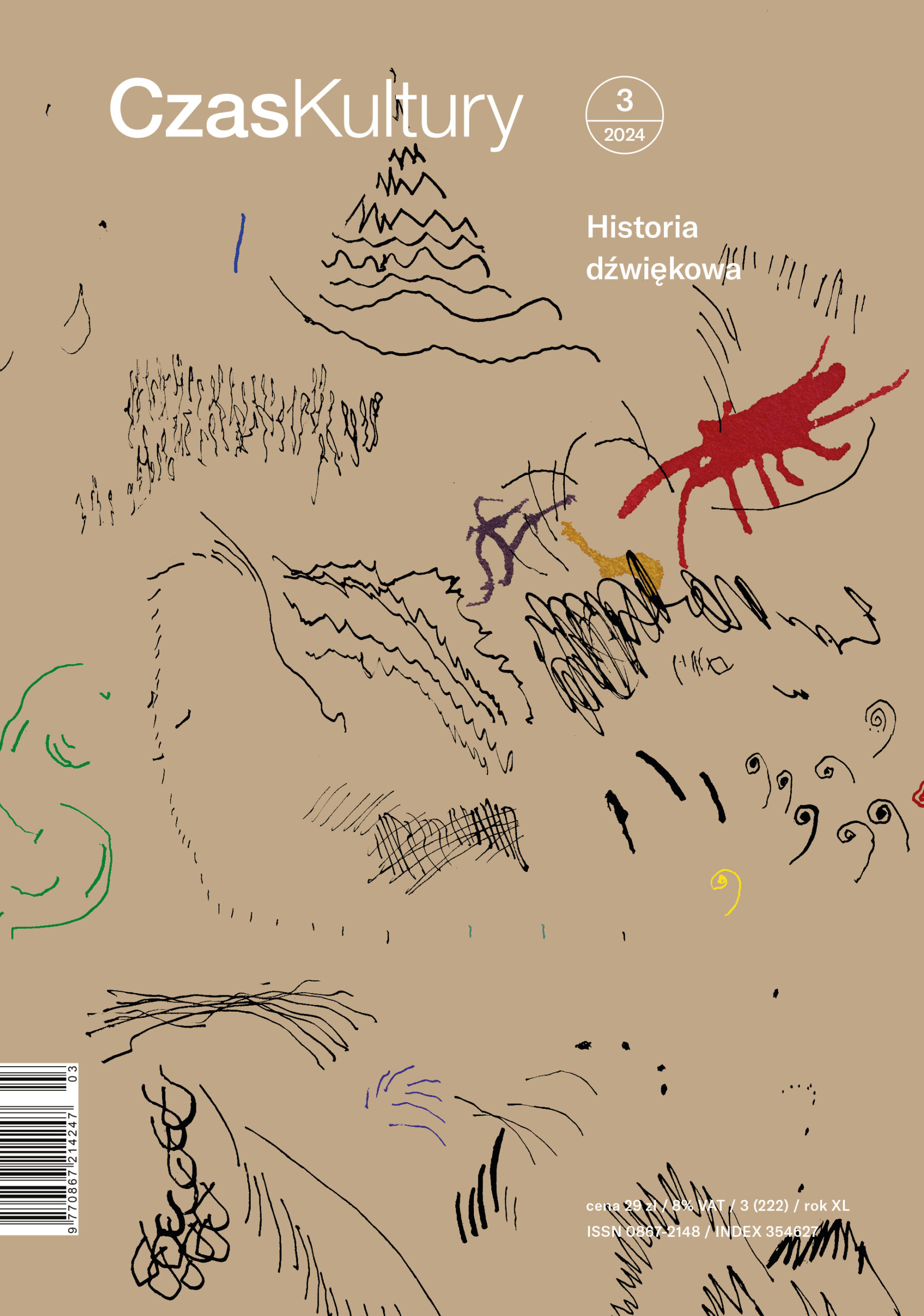vol. XL, no. 3, 2024
Piosenki w obozie. KL Plaszow i możliwość pomnika dźwiękowego
Roma Sendyka
Uniwersytet Jagielloński
ORCID: 0000-0001-7647-2002
Zakres stron: 135–144
Abstrakt:
Piosenki w obozie. KL Plaszow i możliwość pomnika dźwiękowego
Artykuł stanowi próbę wskazania najbardziej wyrazistych strategii obserwacji funkcji dźwięków i muzyki w kacetach oraz kuratorskiego „myślenia muzyką” w ekspozycjach lagrowo-holokaustowych. Katalog tych różnorodnych ujęć pomaga zrozumieć tło i kontekst czasowy działań zespołu kuratorskiego krakowskiego muzeum na terenie KL Plaszow, a także zrekonstruować rozwijanie się projektu Pomnika Dźwiękowego KL Plaszow planowanego dla tego miejsca, oraz wskazuje na inspirujące dźwiękowe realizacje narracji historycznych umieszczonych na otwartych terenach naznaczonych trudną lub traumatyzującą historią. Objaśnienia te partnerują tekstowi kuratorskiemu Michała Libery, autora koncepcji wielopoziomowego, stereometrycznego upamiętnienia dźwiękowego, które komponowane, nagrywane i tworzone jest dla terenu byłego nazistowskiego obozu w Krakowie. Niematerialny wymiar muzyki pozwala na nieinwazyjne łączenie upamiętniającego gestu i współczesnego życia miejsca; niesemiotyczny charakter narracji dźwiękowej daje ponadto nadzieję na budowę porozumienia w różnych, czasem skonfliktowanych społecznościach – dziedziczących uprzedzenia z czasów wojny, tych powojennych i tych współczesnych.
Słowa kluczowe: sound art, historia dźwiękowa, pomniki dźwiękowe, dziedzictwo akustyczne, sound studies
Abstract:
Songs in the Camp. KL Plaszow and the Possibility of an Audio Memorial
This article attempts to identify the most distinctive strategies for observing the function of sounds and music in concentration camps and curatorial "thinking with music" in camp-Holocaust expositions. A catalog of these diverse approaches helps to understand the background and temporal context of the activities of the Krakow museum’s curatorial team at the KL Plaszow site, as well as to reconstruct the development of the KL Plaszow Sound Monument project planned for the site. It also points out inspiring sound realizations of historical narratives placed in open areas marked by a difficult or traumatizing history. These explanations partner with the curatorial text by Michał Libera, author of the concept of a multi-level, stereometric sound commemoration that is composed, recorded and created for the site of the former Nazi camp in Krakow. The non-material dimension of the music allows for a non-invasive blending of the commemorative gesture and the contemporary life of the site; the non-semiotic nature of the sound narrative, moreover, offers hope for building understanding in different, sometimes conflicted communities – those inheriting wartime prejudices, post-war ones and those of today.
Keywords: sound art, sound history, sound monuments, acoustic heritage, sound studies
5,00zł



